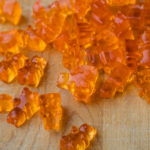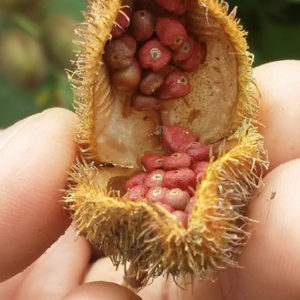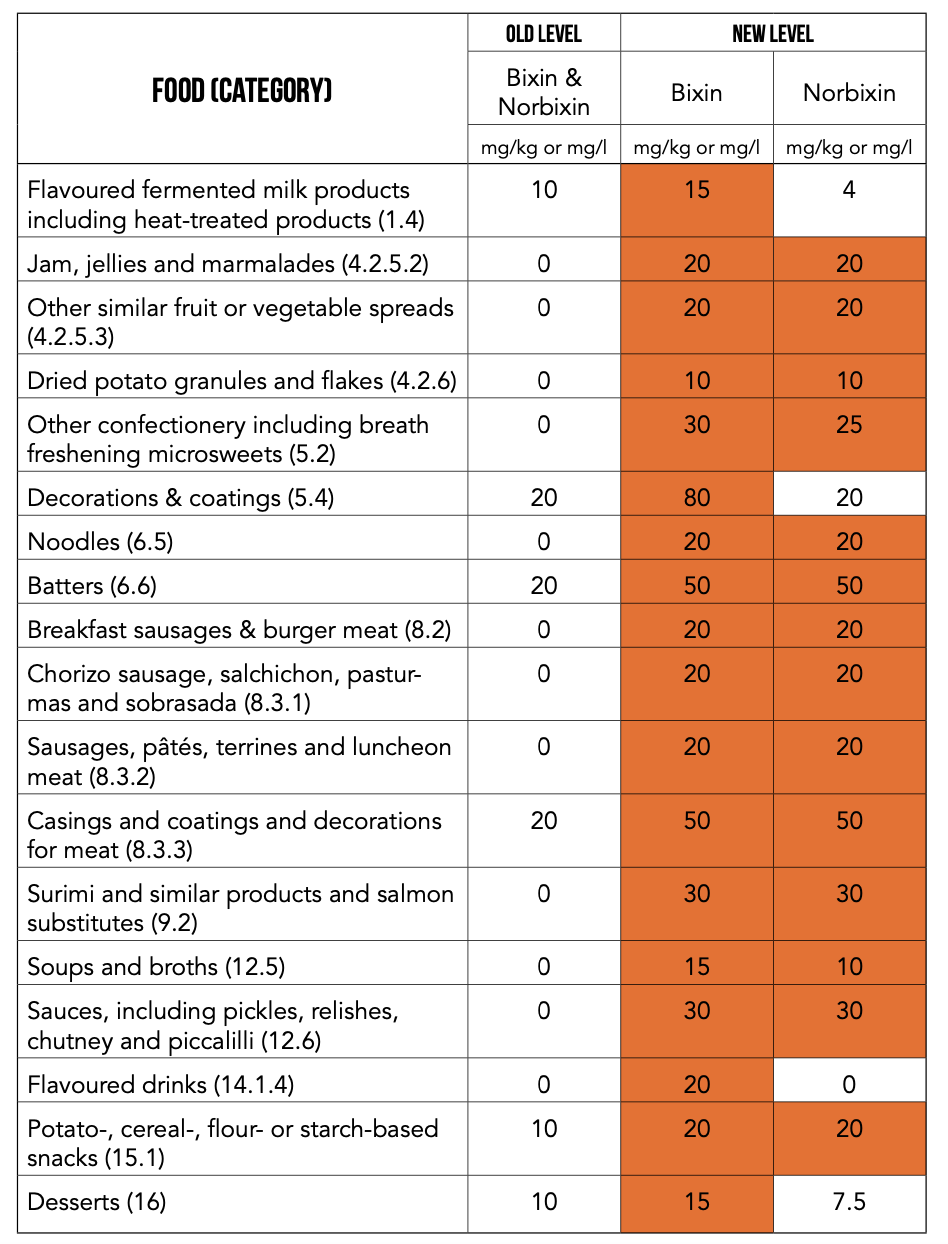Newly expanded applications and increased use rates create new potential for bixin & norbixin in the EU & UK
A welcome finale
The 18 pages of Regulation 2020/771 published in June 2020 were a welcome finale to an industry project that started 25 years ago. This new regulation extends the range of foods that annatto color can be used in and increases some of the permitted levels, creating new opportunities for annatto in the EU.
This is particularly good news for manufacturers of products such as confectionery, snacks, and soups which will now have another color option in the European market.



What is Annatto?

Annatto is a yellow/orange natural color that has been used for many years to standardize the color or give the characteristic color to cheeses like Red Leicester or Mimolette. It is extracted from the seeds of a tropical tree called bixa orellana. Annatto can be extracted as oil-soluble in the form of bixin, or in a water-soluble form called norbixin.
Because bixin has a higher acceptable daily intake (ADI) than norbixin, the new legislation splits these two types, allowing the bixin to be used at higher levels and in additional foods than the norbixin.
A Bit of History
Until the 1994 regulations came into force, annatto was generally used in most foods across the UK and EU. In fact, the UK’s 1993 Dietary Intake of Food Additives reported annatto as being used in products such as confectionery, soft drinks and sauces, all of which had to be reformulated soon afterwards.
As a result of the regulations, the Annatto Interest Group formed in 1995 to develop safety data to support more uses. Now, after 25 years of data collection and analysis, annatto can finally be used again in many applications.
The issue for annatto was never that it was unsafe, but more a case that the safety studies had been carried out on the low concentration extracts available in the 1970s. Based on the levels of annatto extract used, it was calculated that up to 2.5 mg of color per kg of bodyweight of annatto extract was safe to be consumed every day over a lifetime, or ADI, a level similar to other colors.
However, when the ADI was calculated back to the pigment itself it was only 0.065 mg/kg bodyweight/day. With such a low ADI, it was inevitable that the range of uses would need to be limited to ensure proper consumption levels.
The first of the new safety studies were completed and submitted to the FAO/ WHO Joint Expert Committee for Food Additives (JECFA) who reviewed them in 2003 and subdivided the products into 6 sub-categories. The ADIs of the popular products were increased significantly. Data was submitted again to the EU in 2008, 2011, and 2016.
Finally, in March 2019, EFSA published their opinion allocating an ADI for the new annatto sub-categories and a set of uses where “the level of exposure does not raise a health concern”. This led to the publication of the new regulations in June 2020.
So, what are the new permitted applications?
Dairy applications have always been important, but there are opportunities for annatto in a wide variety of other foods. The items that can newly contain either form of annatto or that have increased use levels can be found in the chart* below.

*This chart shows only applications with increased use levels of annatto. For a full list of changes, please see the full regulations.






